Hair Loss Treatment for Men and Women
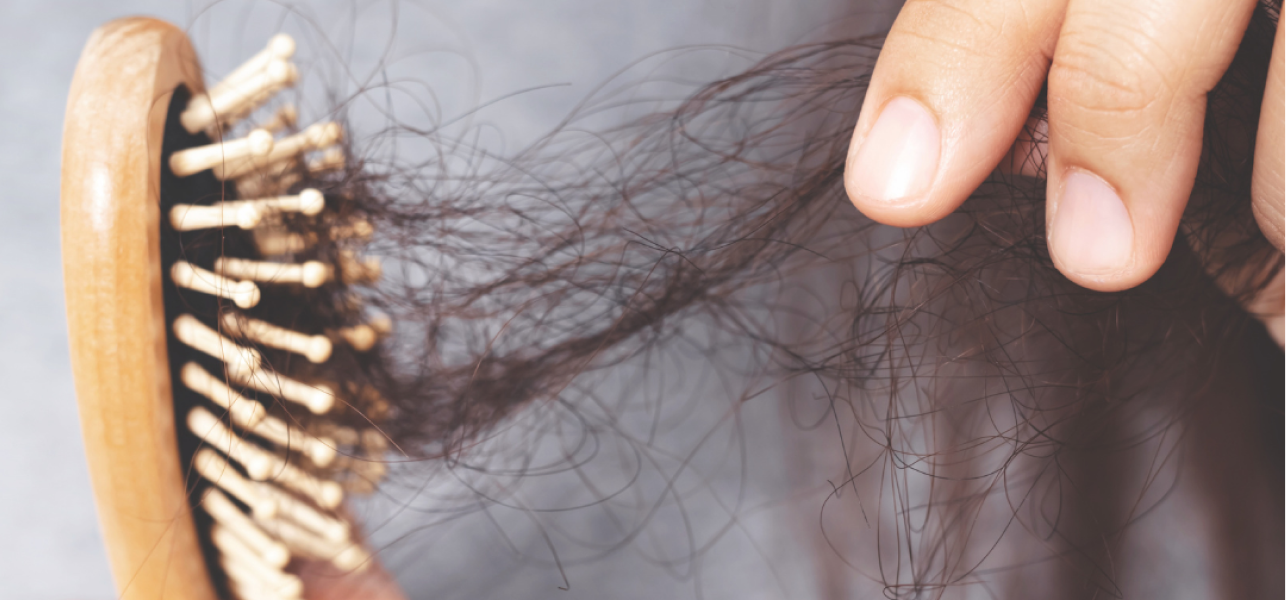
When we look at the statistics, we see that more than 80 million Americans suffer from hair loss, so the problem is much more widespread than you might think.
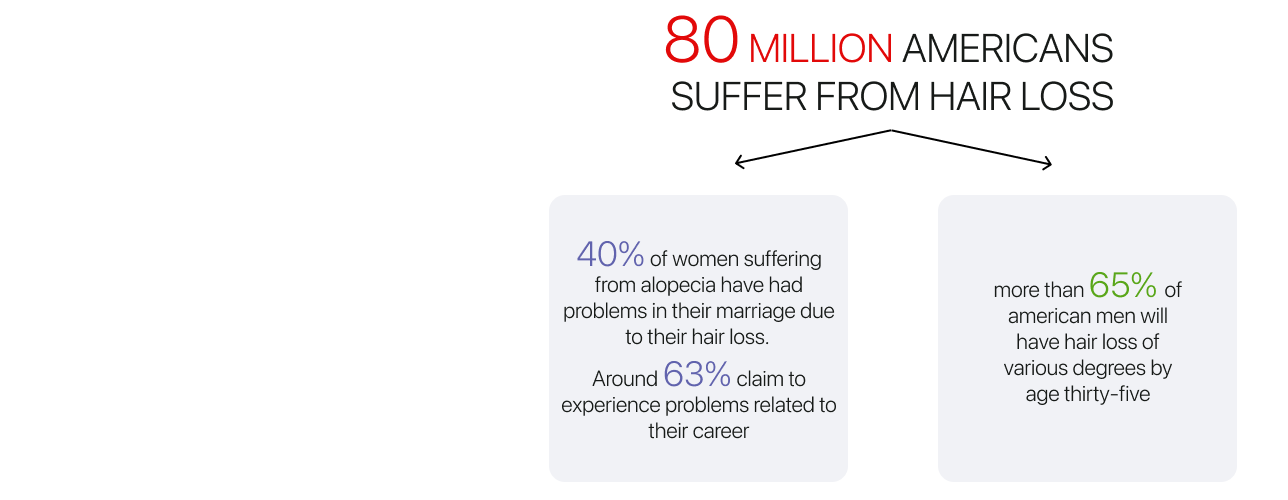

About 80% of women suffer from hair loss by age sixty. More than 65% of American men have hair loss of various degrees by age thirty-five.
Hair loss may cause psychological and social discomfort and feeling insecure about body image satisfaction. Interesting fact for reflection: 40% of women suffering from alopecia have had problems in their marriage due to their hair loss. Around 63% claim to experience problems related to their career.
Considering this data, let’s take a deeper look at this problem to understand the causes of hair loss, and what the effective hair loss treatment options are available.
What causes hair loss?
Hair consists of two different parts:
There are approximately 100,000 follicles on the scalp. Hair loss is a continuous natural process, however, there is a subtle difference between hair loss and hair shedding. It is considered acceptable to shed 50 to 100 hair pieces per day. And when we lose much more? What exactly causes problems with hair shedding?
The reasons can be diverse, for example, it can be due to heredity, stress and emotional upheaval, hormonal imbalance, and nutritional problems when a person has unbalanced nutrition or abuses strict diets, which leads to a deficiency of zinc, iron, and other important vitamins. Even environmental influences can be the cause of hair loss and endocrine disorders, or we can associate hair shedding as a consequence of taking medications, mainly due to chemotherapy. Another reason for hair loss can be caused by scalp diseases, of which there are both scarring or non-scarring.
Is it true that Covid‑19 causes hair loss?
Not everyone knows that after COVID-19 recovery many people find that their hair is falling out in large clumps. There are lots of long-term side effects after COVID-19, and hair loss also has been reported as a common symptom.
This can last from six to nine months and an additional trigger for hair loss is stress, and the fact that the hair is shedding, it causes the person even more stress.
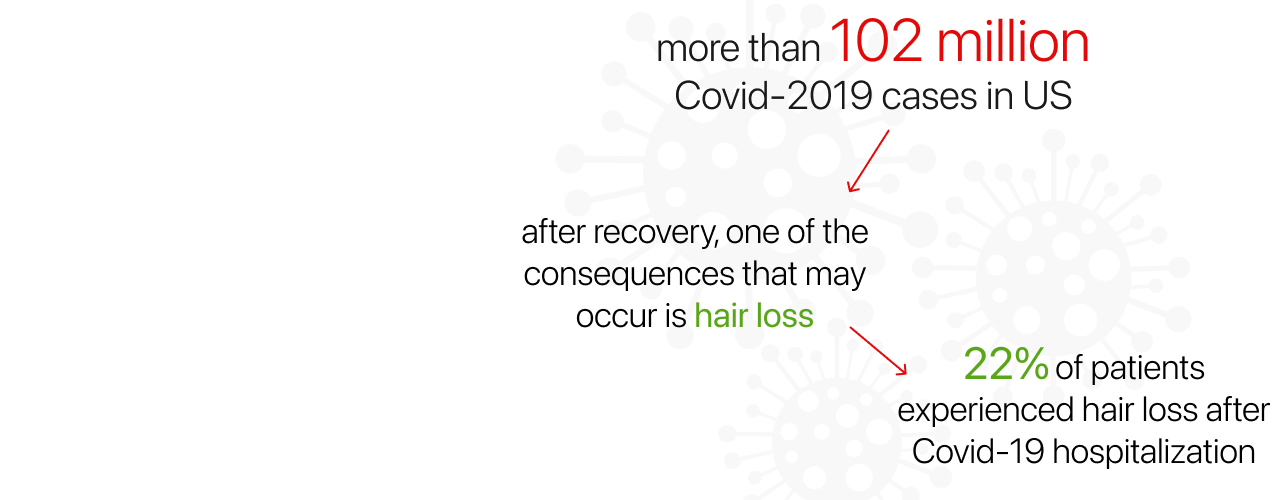
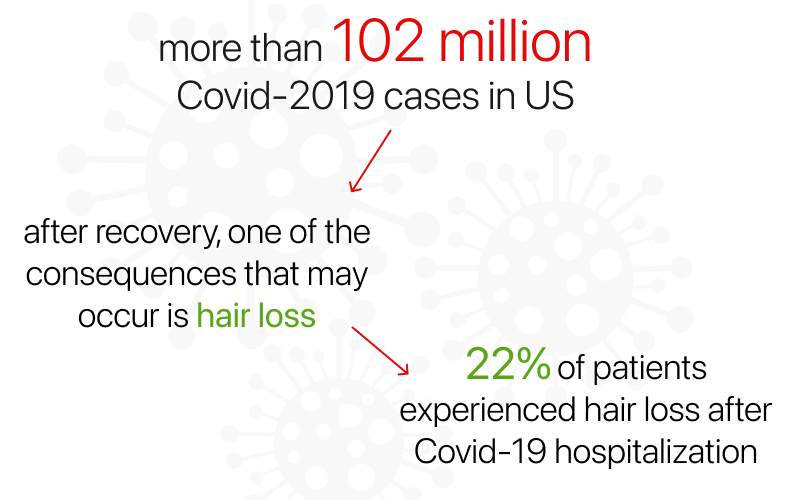
The medical name for this type of hair loss is telogen effluvium, which we will describe in more detail in the next paragraph. 22% of patients experienced hair loss after COVID-19 hospitalization. According to official Wordometer data, more than 99 million people have recovered from the coronavirus in the USA.
Hair loss conditions
Mega Aid has developed a number of compounds for treating the following hair loss medical conditions: Androgenic hair loss, Alopecia areata, Tinea capitis, Recovery from chemotherapy, Telogen effluvium, Anagen effluvium, and Trichotillomania. Let us describe how each of the conditions manifests itself.
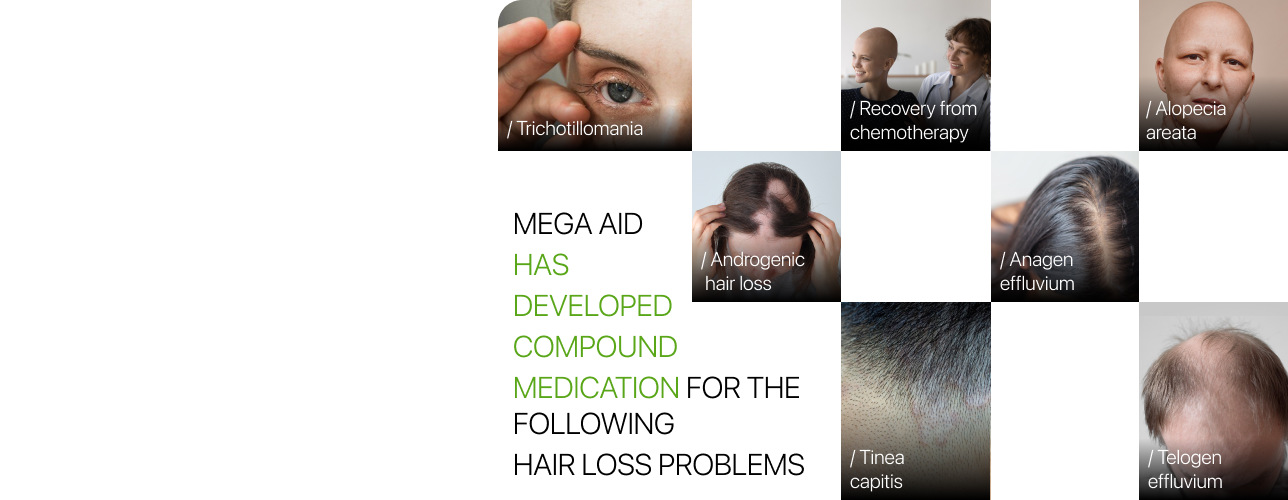
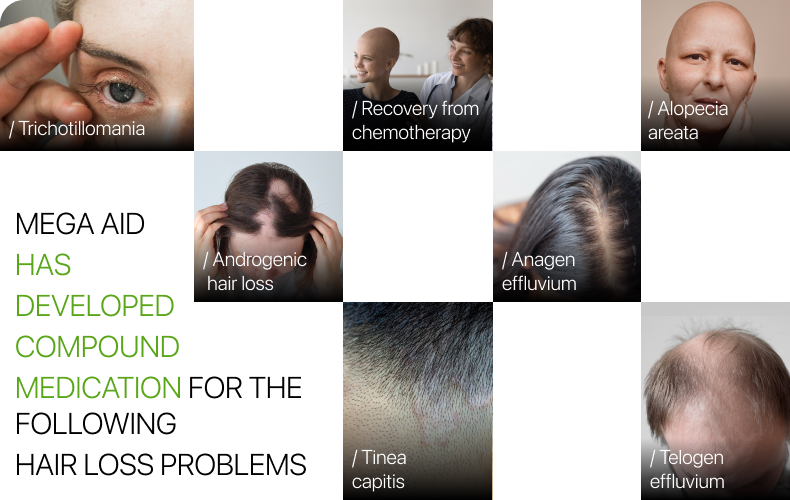
Androgenic hair loss. According to Medline Plus, 50 million men and 30 million women in the United States suffer from this disorder. The inheritance pattern of androgenetic alopecia is uncertain due to many genetic and environmental factors. This is the most common type of hair loss in men and women. It is a genetically predetermined disorder likely due to an excessive androgen response. In males, hair loss is most prominent in the vertex and frontotemporal regions, commonly observed as a receding M-shape hairline. In females, the frontal hairline is typically spared. In contrast, diffuse apical hair loss is seen forming over the crown resulting in hair thinning or shedding, rarely leading to total baldness in females.
Alopecia areata. Alopecia Areata can affect anyone and according to AJMC, 6.8 million people in the United States have the disease. Patients suffering from alopecia areata can have their hair fall out unpredictably. This form of hair loss develops when the body attacks its own healthy hair follicles causing hair to fall out and, in some cases, prevent regrowing. Hair loss is often observed in small round patches around the size of a quarter. There can be a few patches, but alopecia areata can affect the entirety of the scalp as well as other body parts.
Tinea capitis. This common fungal infection of the scalp mostly affects children. According to MDedge in a US-based study of more than 10,000 school-aged children, the prevalence of tinea capitis ranged from 0% to 19.4%. Signs of this disease can include unpleasant itchiness, dandruff, scaly and inflamed skin, as well as hair loss. The site of infection is usually a very tender and painful area on the scalp, patches can slowly get bigger and have black dots where the hair has fallen off.
Telogen effluvium. A cause of temporary hair loss driven by an abnormality in the normal hair cycle. This disease is known as a scalp disorder described by excessive shedding of hair. Telogen effluvium may develop from various factors including drugs, trauma, poor diet, and emotional or physiological stress (ex. Childbirth). A patient experiencing Telogen effluvium may notice that hair is falling out more than usual when they wash or brush their hair. Usually, hair loss occurs on the top of the scalp but may appear all over depending on severity.
Recovery from chemotherapy. Cancer treatment, including both chemotherapy and radiation, causes many troublesome effects on numerous parts of the body and has a lot of consequences. Chemotherapy targets rapidly growing cells in the body including hair follicles causing hair to fall out. However, not all chemotherapy medication causes hair loss. Radiation treatment can also result in hair loss when treating the head and/or neck area.
Anagen effluvium. Hair loss occurs rapidly after medical treatment, particularly chemotherapy. Hair follicles in the anagen phase experience a toxic or inflammatory insult which leads to fracture of the hair shaft resulting in shedding of the hair. Shedding usually occurs within 14 days after administrating the offending agent. In many cases anagen effluvium is reversible and hair growth is seen upon discontinuation of the offending agent.
Trichotillomania. Trichotillomania falls under the spectrum of Obsessive Compulsive Disorder (OCD). Trichotillomania, or trich, is a disorder in which the patient has an irresistible urge to pull on their own hair. Patients suffering from this disorder pull their hair in response to a stress stimulus. A patient may pull out the hair on their scalp or from other body parts (eyebrows, eyelashes, etc) and in doing so find stress relief. This disease mainly begins at an early age and can become chronic. It can also be observed among adolescents starting from the age of 12, adults can also face this disease in old age.
Drug classes used for hair loss treatment
Mega Aid has developed many multi-modal approaches for hair restoration treatment. Below you can explore the main drug classes which we use in production of customized medicines.
Vasodilators
It is a vasodilator that acts by opening adenosine triphosphate-sensitive potassium channels in vascular smooth muscle cells. Due to this, it improves the viability of hair cells and hair follicles.
Finasteride (Inhibitor) 5-alpha reductase
This is a group of drugs used to treat male pattern baldness. According to WebMD, the 5ARIs work by suppressing the 5-alpha reductase enzyme. This decreases the amount of DHT that the body produces which plays a role in the growth of facial hair, and male-pattern baldness.
Hormones
Since hormonal imbalance is one of the causes of hair loss, too much testosterone can also lead to thinning hair on your head, but increased facial hair. Therefore, proper regulation of hormones in preparations will prevent hair loss.
Diuretics
Minoxidil is considered a first-line treatment for female pattern hair loss, which stabilizes hair loss. Direct stimulation of the hair follicles: Minoxidil may act as an ‘epidermal growth factor’ on matrix cells delaying their aging, thus prolonging the duration of the anagen phase via the activation of the beta-catenin pathway.
Retinoids (Vitamins)
They enhance the protective function of the epidermis, inhibit transepidermal water loss, protect collagen from degradation and inhibit the activity of metalloproteinases. One of the vitamins is biotin, which is necessary for the body to metabolize carbohydrates, fats, and amino acids, which strengthens our hair.
Topical corticosteroids
Corticosteroids modify the functions of epidermal, dermal, and leukocyte cells involved in inflammatory skin diseases. Interactions of corticosteroids provide anti-inflammatory, immunosuppressive, and antimitogenic effects. Corticosteroids reduce inflammation and pruritus and are effective for both the acute and chronic components of AD. They affect multiple residents and infiltrating cells primarily through the suppression of inflammatory genes, reducing inflammation and pruritus.
Hair loss treatment using compound medications
The first and most important step in hair loss treatment is to identify the exact condition of hair loss.
The second step – is consider all the patient individual peculiarities such as medication tolerances, possible side effects, other prescribed drugs, and any information about health, which can influence on formulation of the medicine.
Only after analyzing the issues above, we can start producing true effective medicine for hair restoration.
We are convinced that each person is special in their own way, so the approach should be individual, including treatment. With this in mind, Mega Aid uses a multi-modal treatment approach with the ability to make multiple formulation combinations. We are guided by three main rules:
With these three beliefs, which we follow responsibly, we create unique medicines. Tailored treatment is selected for each patient regarding specific health conditions to improve symptoms in the most effective way.
If you are a healthcare provider and you want to improve patient outcomes with Mega Aid, contact us to connect with a dedicated Pharmacy Liaison, who can discuss our formulation capabilities that are appropriate to each patient’s individualized condition and needs.
Hair restoration therapy compliance using medication therapy management
Mega Aid conducts our own medication therapy management (MTM) service for patient treatment monitoring and iterative improvement.


The principle of our MTM is based on three main things:
1. Controlling patient adherence
Approximately two weeks after dispensing a compound medication, a dedicated Mega Aid Patient Care Coordinator will call the patient to confirm treatment adherence and a positive outcome.
If we understand that the patient is non-compliant with their prescribed treatment, the Patient Care Coordinator educates the patient about proper medication usage.
2. Measuring the treatment outcomes
A Patient Care Coordinator constantly monitors the patient’s condition, symptoms, and usage of medications and, for many treatments, measures the progress or effect of the medication.
3. Improving the treatment with a healthcare provider
A Pharmacy Liaison reports outcomes to and collaborates with the healthcare provider to continuously improve patient therapy. Even if a healthcare provider has additional questions, our Pharmacy Liaison advises not only patients but also prescribers and other healthcare providers.

